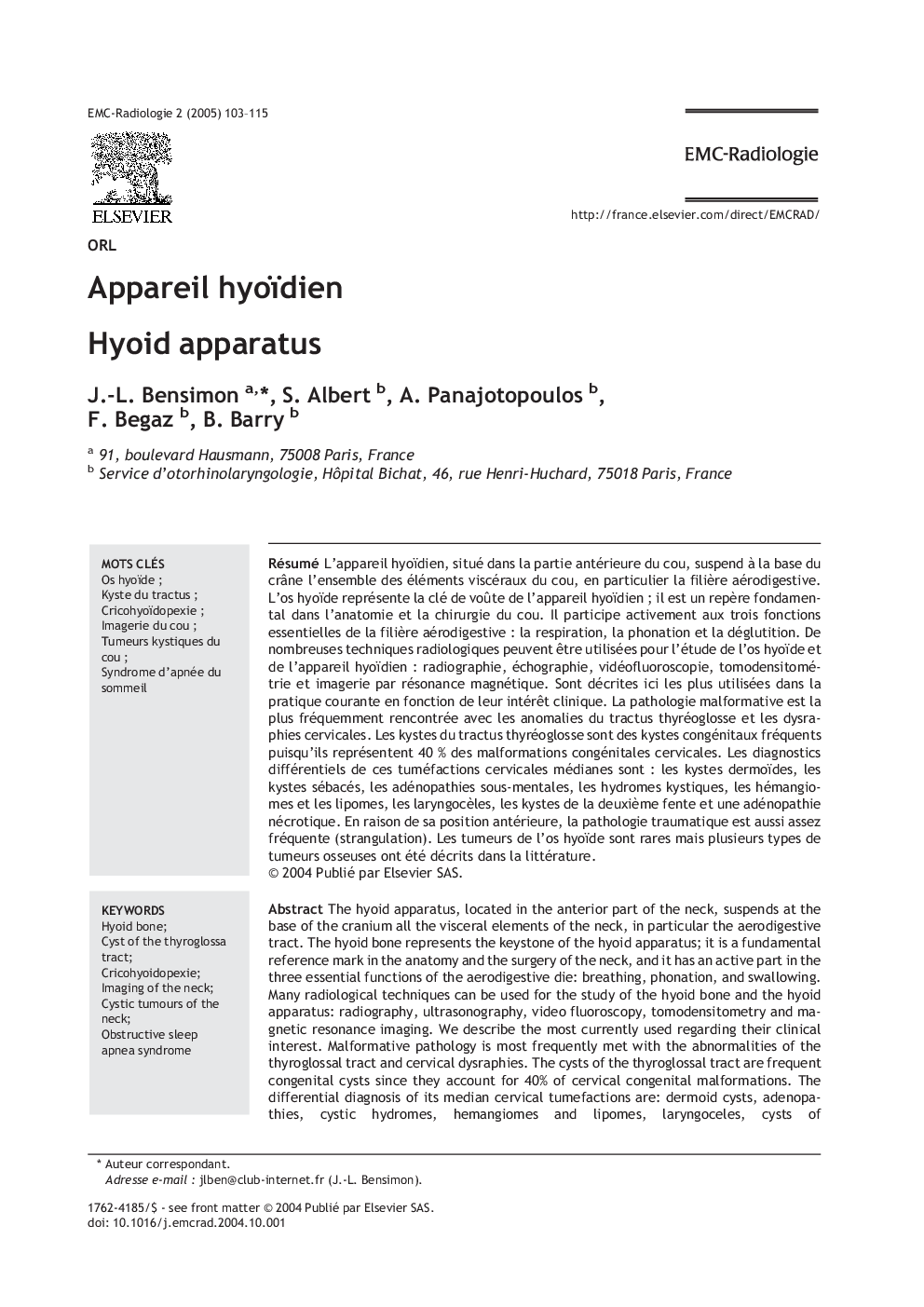| Article ID | Journal | Published Year | Pages | File Type |
|---|---|---|---|---|
| 9390092 | EMC - Radiologie | 2005 | 13 Pages |
Abstract
The hyoid apparatus, located in the anterior part of the neck, suspends at the base of the cranium all the visceral elements of the neck, in particular the aerodigestive tract. The hyoid bone represents the keystone of the hyoid apparatus; it is a fundamental reference mark in the anatomy and the surgery of the neck, and it has an active part in the three essential functions of the aerodigestive die: breathing, phonation, and swallowing. Many radiological techniques can be used for the study of the hyoid bone and the hyoid apparatus: radiography, ultrasonography, video fluoroscopy, tomodensitometry and magnetic resonance imaging. We describe the most currently used regarding their clinical interest. Malformative pathology is most frequently met with the abnormalities of the thyroglossal tract and cervical dysraphies. The cysts of the thyroglossal tract are frequent congenital cysts since they account for 40% of cervical congenital malformations. The differential diagnosis of its median cervical tumefactions are: dermoid cysts, adenopathies, cystic hydromes, hemangiomes and lipomes, laryngoceles, cysts of the second cleft and necrotic adenopathies. Traumatic pathology is almost frequent (strangulation). The tumours of the hyoid bone are rare but several types of osseous tumours have been described in the literature.
Related Topics
Health Sciences
Medicine and Dentistry
Radiology and Imaging
Authors
J.-L. Bensimon, S. Albert, A. Panajotopoulos, F. Begaz, B. Barry,
